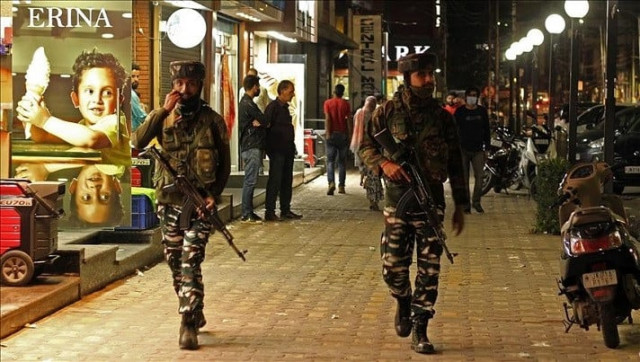India's move to rehabilitate pandit families in IIOJK slammed
Experts deem the move an attempt to change the religious and demographic composition of the occupied valley

The Narendra Modi-led government is rehabilitating families of Kashmiri pandits back to Indian Illegally Occupied Jammu and Kashmir (IIOJK) by offering substantial rewards to change the religious and demographic composition of the occupied territory.
The pandit families were displaced in the wake of unrest during the late 1980s and early 1990s. It is widely believed that this exodus was orchestrated by the government so that it could use it as a pretext to garner domestic support in favour of a large-scale military operation to quell the freedom movement.
Now, the Indian government is channelling all its energies, cunningness and resources to subdue Kashmir but it remains resistant and resilient.
According to the official statistics, some 3,800 Kashmiri pandit families have already been rehabilitated while around 44,000 families received over $171 per month.
They were also offered around 6,000 jobs, out of which, 3,800 vacancies have already been filled.
Contrary to the lucrative offers being given to the pandits, the displaced Muslim families of the Gujarat riots were given a stipend of $6.6 and that too was discontinued shortly thereafter, with their camps forcefully shut down.
Also read: AJK president urges OIC to stop bloodshed in IIOJK
On July 2, 1984, GM Shah, who enjoyed support from Indira Gandhi, replaced his brother-in-law Farooq Abdullah and became the chief minister of Jammu and Kashmir, after Abdullah was dismissed, in what was termed a political “coup”.
In 1986, Shah decided to construct a mosque within the premises of an ancient Hindu temple inside the New Civil Secretariat area which triggered Hindu-Muslim clashes.
In Vanpoh, Lukbhavan, Anantnag, Salar and Fatehpur, Muslim mobs plundered or destroyed the properties and temples of Hindus.
An investigation of Anantnag riots revealed that members of the Indian state-backed ‘secular parties’ in the state, rather than the Muslims, which played a key role in perpetrating violence to gain political mileage through religious sentiments.
According to the Relief and Rehabilitation department, some 60,000 families migrated from Kashmir and settled in Jammu and adjoining areas. Out of these, 23,000 families settled outside the state of IIOJK.
After they left the valley, many states gave them seat reservations to take up medical or engineering courses which continues to this day. On the other hand, a Kashmiri Muslim family has to send their children outside India and spend nearly Rs500,000 to secure their admission to foreign countries.
The exodus of Kashmiri pandit families from the Kashmir valley is a controversial issue.
Also read: Pakistan, India clash at UN over abuses in IIOJK
On one side, there are stories of thousands of pandits who left the valley during the insurgency that erupted in IIOJK in 1989, suggesting that the community suffered enough intimidation to abandon their homes.
On the other hand, the accounts of Kashmiri pandits who stayed behind in Kashmir contradict claims by pandits in the diaspora who say that Kashmiri pandits suffered ‘a genocide’ and were forced ‘into exile’.
Many scholars believe that the government of India orchestrated Hindu-Muslim riots. As it was a time when Kashmir was facing ‘intifada’ and Kashmiri youth took up arms against occupying Indian forces.
The Indian government used the Kashmir pandit saga as a pretext to launch a large-scale operation against Kashmiri Muslims. In order to repulse international criticism and garner domestic support, the Indian government used the Kashmir pandit exodus as an excuse.
After revoking Article 370 and 35-A in August 2019 and changing Kashmir’s special status unilaterally, India is now focusing on changing Kashmir’s demography which is an utter violation of International law.



















COMMENTS
Comments are moderated and generally will be posted if they are on-topic and not abusive.
For more information, please see our Comments FAQ